Match the activity given in Column-I with the type of pollution created by it given in Column II.
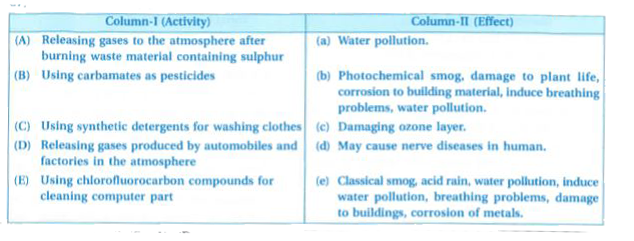
Text Solution
The correct Answer is:(A - 5), (B - 4), (C-1), (D - 2), (E - 3)
(A) Classical smog, acid rain, water pollution, induce breathing problems, damage to building, corrosion of metals.
(B) May cause nerve disease in human.
(C) Water pollution.
(D) Photochemical smog, damage to plant life, corrosion to building material, induce breathing problems, water pollution.
(E) Damaging ozone layer.
|
Topper's Solved these Questions
- ENVIRONMENT CHEMISTRY BOOK - KUMAR PRAKASHANCHAPTER - ENVIRONMENT CHEMISTRY EXERCISE - SECTION-D NCERT EXEMPLAR SOLUTION (Assertion and Reason Type)
7 Videos
- ENVIRONMENT CHEMISTRY BOOK - KUMAR PRAKASHANCHAPTER - ENVIRONMENT CHEMISTRY EXERCISE - SECTION-D NCERT EXEMPLAR SOLUTION (Long Answer Type)
8 Videos
- ENVIRONMENT CHEMISTRY BOOK - KUMAR PRAKASHANCHAPTER - ENVIRONMENT CHEMISTRY EXERCISE - SECTION-D NCERT EXEMPLAR SOLUTION (Short Answer Type)
1 Videos
- CLASSIFICATION OF ELEMENTS AND PERIODICITY IN PROPERTIES BOOK - KUMAR PRAKASHANCHAPTER - CLASSIFICATION OF ELEMENTS AND PERIODICITY IN PROPERTIES EXERCISE - Section -D SOLUTIONS OF NCERT EXEMPLAR PROBLEMS (Long Answer Type Questions )
7 Videos
- EQUILIBRIUMBOOK - KUMAR PRAKASHANCHAPTER - EQUILIBRIUMEXERCISE - Question Paper from Module
7 Videos
Similar Questions
Knowledge Check
Observe the table given below and match the reaction given in column I with the type of reaction given in column II.
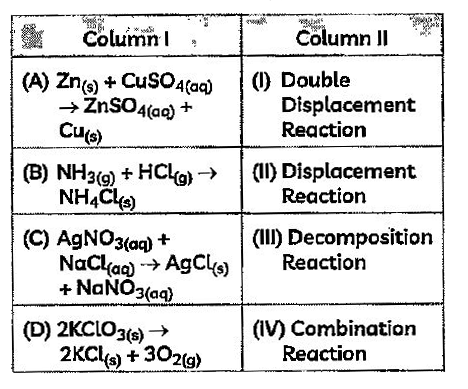 A(A)-(I), (B) - (IV), (C) - (II),(D)-(III)B(A)- (I), (B) - (IV), (C) - (III), (D) - (II)C(A)- (II), (B) - (IV): (C) - (III), (D) - (I)D(A)- (I), (B) - (IV), (C) - (I), (D) - (III)
A(A)-(I), (B) - (IV), (C) - (II),(D)-(III)B(A)- (I), (B) - (IV), (C) - (III), (D) - (II)C(A)- (II), (B) - (IV): (C) - (III), (D) - (I)D(A)- (I), (B) - (IV), (C) - (I), (D) - (III)
Match the polymers given in column I with the type of linkage present in them given in column II
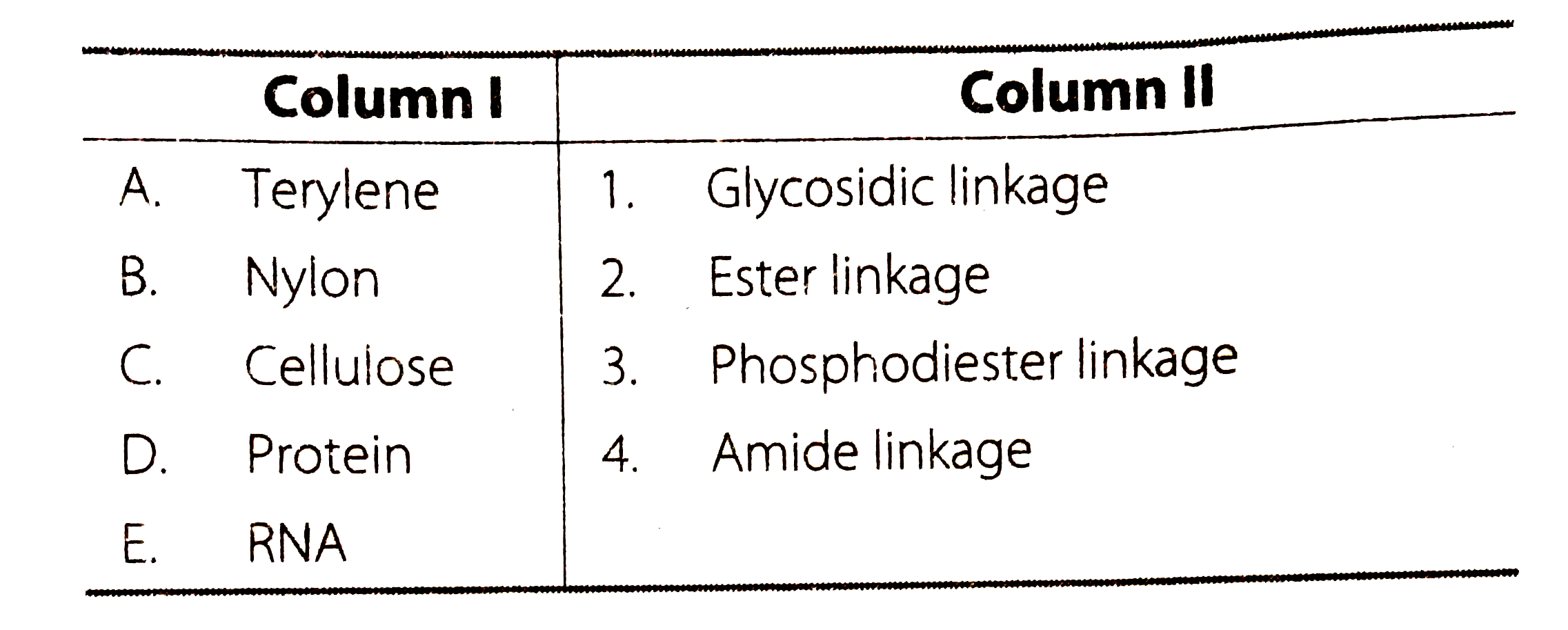
View SolutionMatch the example given in Column I with the type of colloid given in Column II.
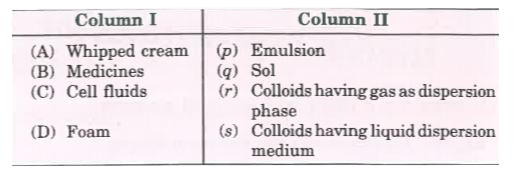
View SolutionMatch structures given in Column I with the type of detergents given in Column II.
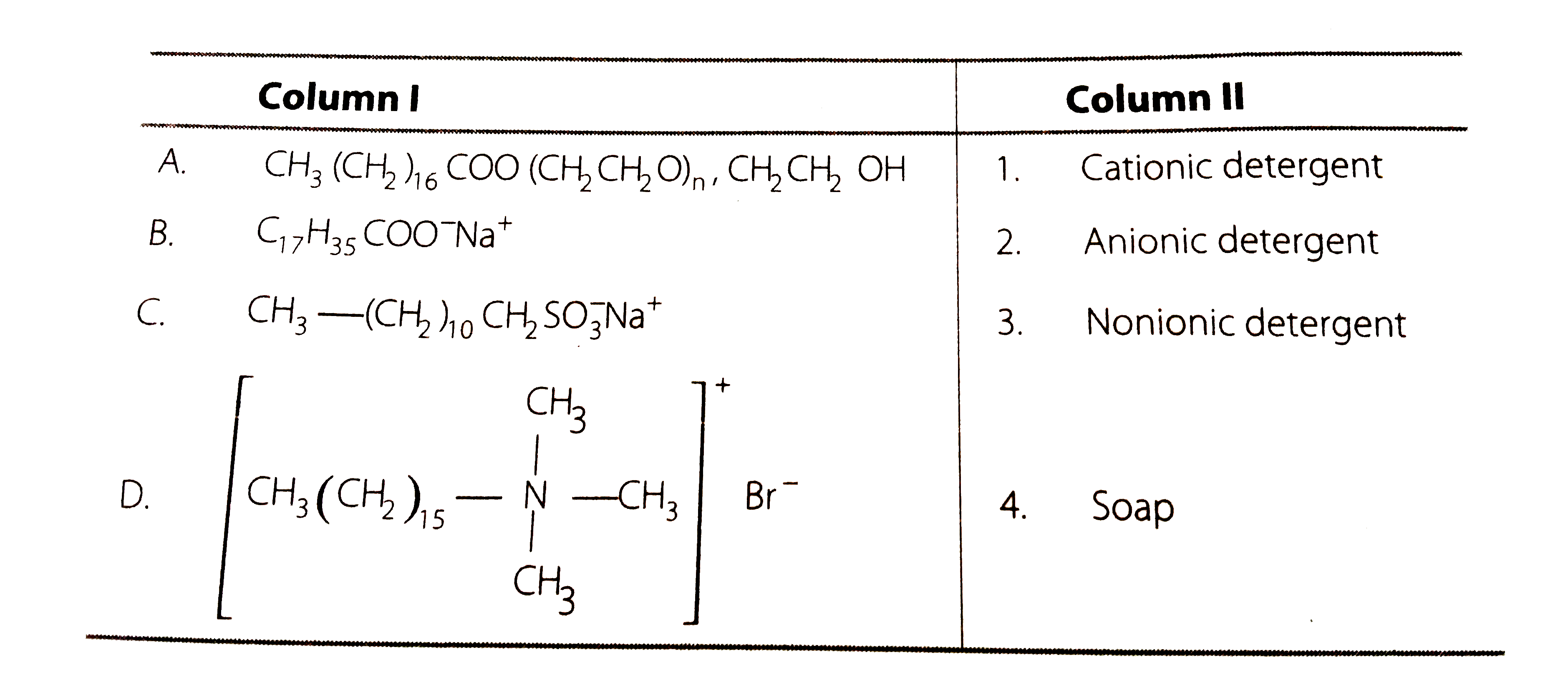
View SolutionMatch the reactions given in Column I with the types of reactions given in Column II.

View SolutionMatch structures given in Column I with the type of detergents given in Column II.

View SolutionMatch the reactions given in Column I with the types of reactions given in Column II.

View SolutionMatch the reactions given in Column I with the type of reactions given in Column II
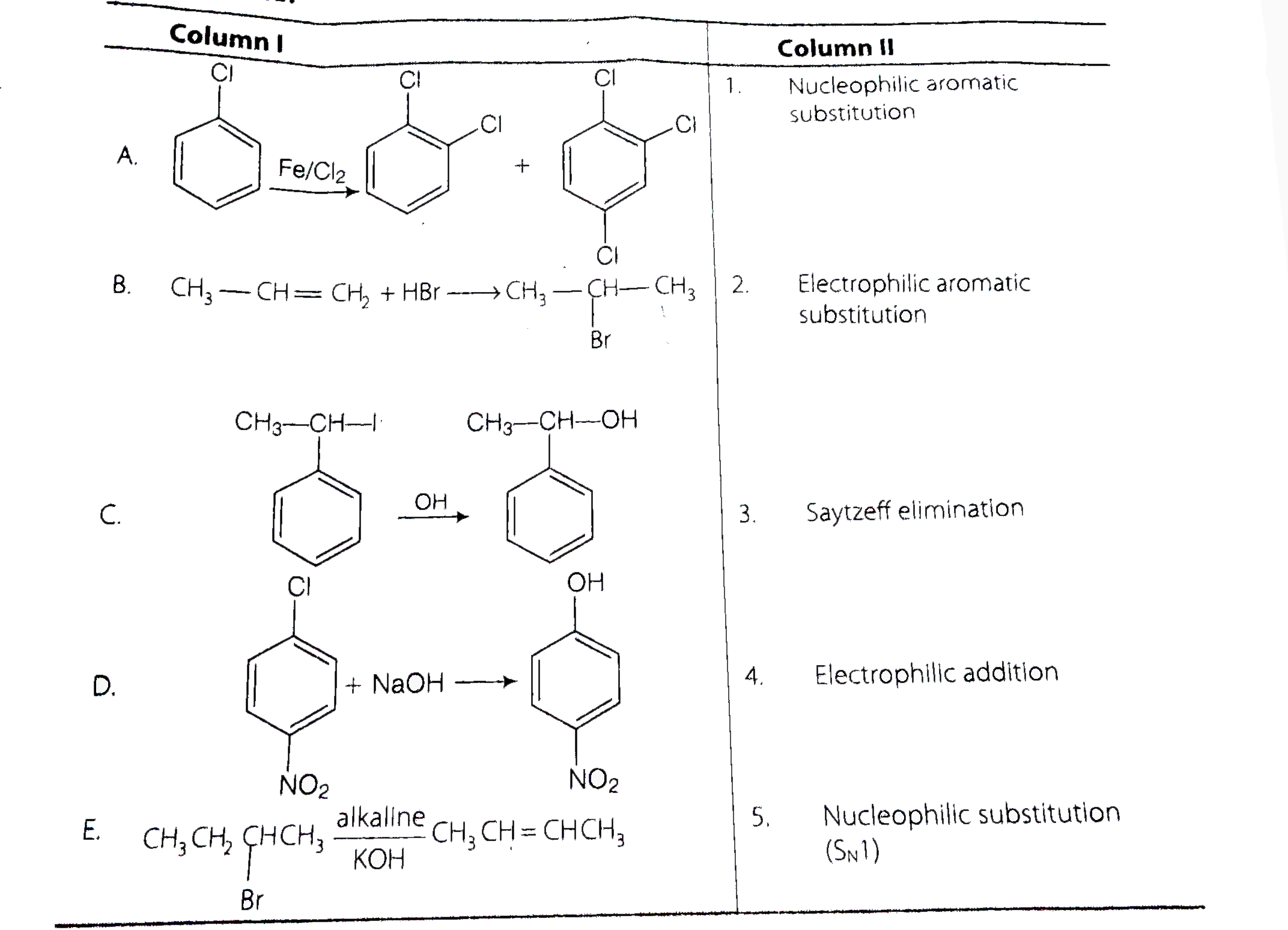
View Solution
